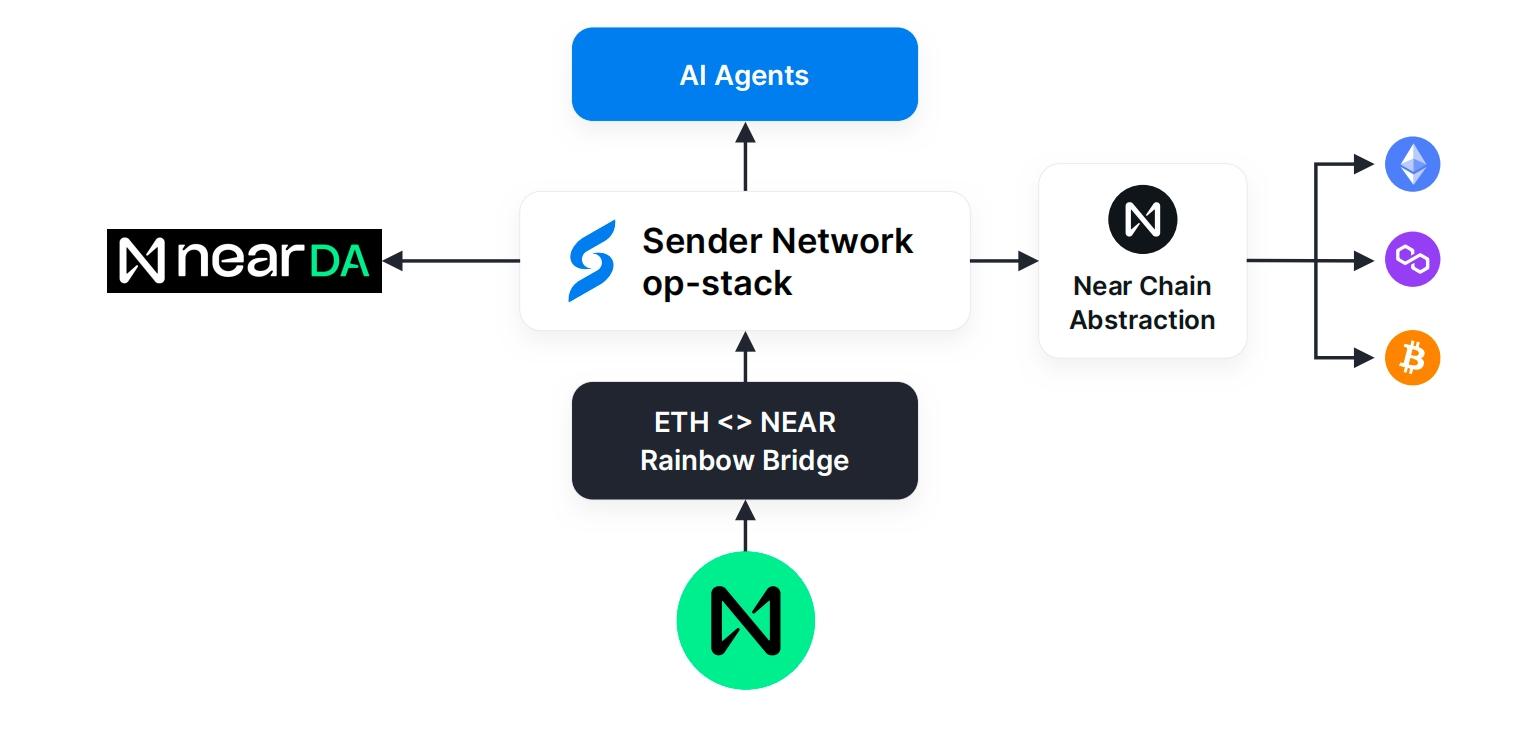3.infrasturcture layer

3.1 OP Stack
Sender Network is an innovative Layer 2 solution that cleverly combines the efficient framework of OP Stack with advanced features of the NEAR chain. It inherits Optimism's advantages of high speed, low Gas fees, and high efficiency, while integrating NEAR's data availability (DA) and chain abstraction. This unique combination not only provides excellent performance and user experience but also creates an ideal environment for AI Agent collaboration.
3.2 Data Availability
Sender Network adopts a set of DA modular solutions provided by Near, achieving more efficient data processing;
3.21 Blob Store Smart Contract
Build a set of smart contracts that can receive and store arbitrary DA Blob data;
Process data through Near consensus to ensure data integrity and availability;
3.22 Light Client and Data Availability Verification
Develop trustless off-chain light clients to support Near DA functionality;
Support dynamic adjustment of sampling rates and verification mechanisms to balance security and execution efficiency;
3.23 RPC Nodes and Clients
Deploy RPC service nodes to receive and process user data;
Develop standard RPC clients for submitting data Blobs to Near;
3.24 Dynamic Sharding Technology and Cost Optimization
Implement dynamic sharding technology to expand storage capacity as needed;
Optimize data storage structure to ensure efficient use of allocated space;
3.3 Chain Abstraction
3.31 Fast-Auth: Email Registration
Like the Near mainchain, allow users to create Sender Network accounts using email addresses;
Protect user private keys through multi-party computation (MPC) in cloud storage or IPFS network environments;
Achieve seamless unified account usage experience across chains and applications;
3.32 Relayers: Integrated Account Abstraction
Built-in "account abstraction" functionality allows AI Agents to subsidize user Gas fees;
Use meta-transactions to wrap user transactions;
3.33 Multi-Signature: One Account, Multiple Chains
Support interaction with multiple blockchain networks such as Ethereum, BNBChain, Avalanche, etc.;
Allow users to sign transactions on other chains using a unified Sender Network account;
3.34 Developer-Friendly
Simplify development processes, reducing the need to maintain multiple chain-specific codebases;
Provide unified SDK interfaces for easy integration of new chains and applications;
Last updated